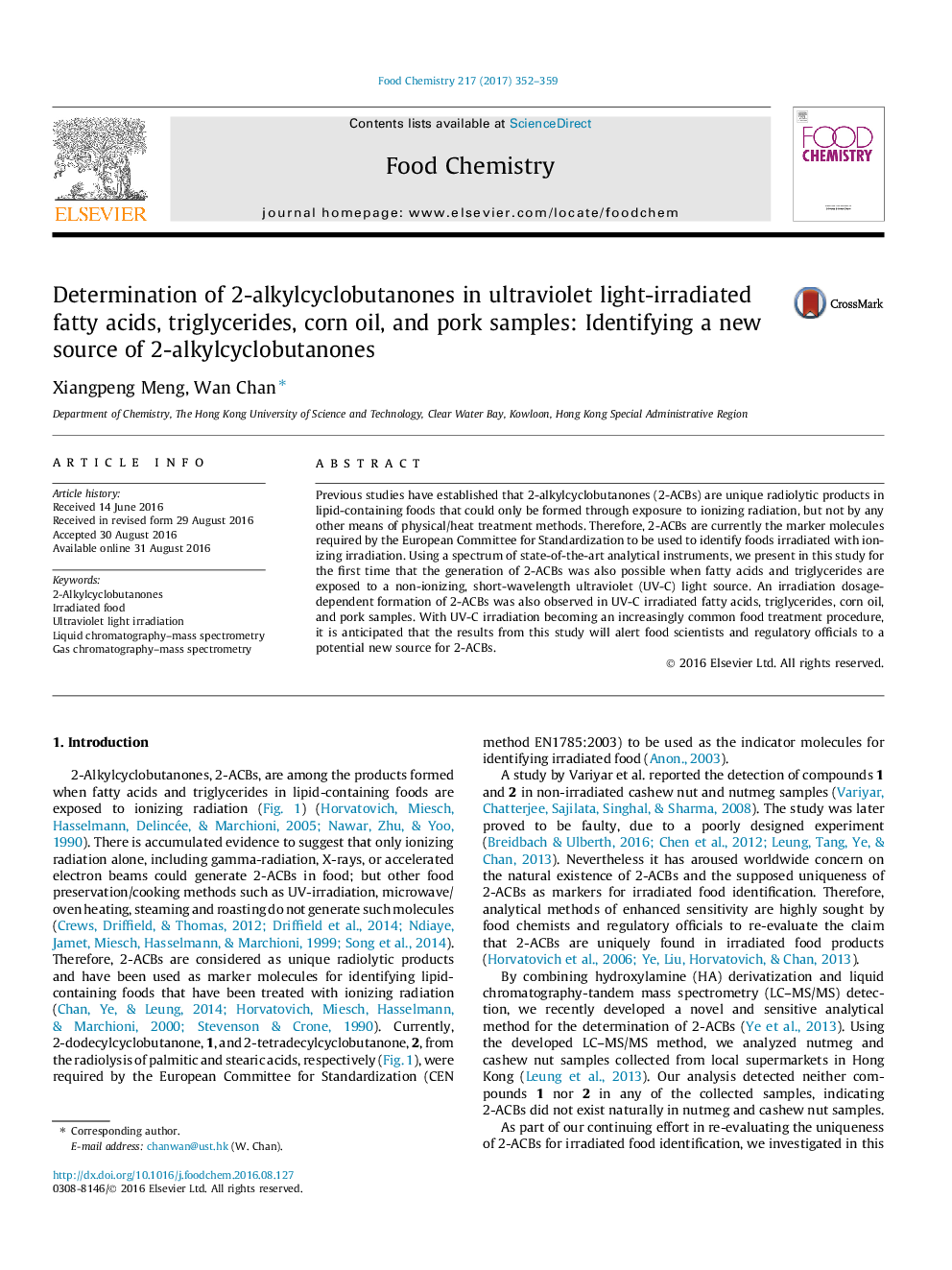| Article ID | Journal | Published Year | Pages | File Type |
|---|---|---|---|---|
| 7586622 | Food Chemistry | 2017 | 8 Pages |
Abstract
Previous studies have established that 2-alkylcyclobutanones (2-ACBs) are unique radiolytic products in lipid-containing foods that could only be formed through exposure to ionizing radiation, but not by any other means of physical/heat treatment methods. Therefore, 2-ACBs are currently the marker molecules required by the European Committee for Standardization to be used to identify foods irradiated with ionizing irradiation. Using a spectrum of state-of-the-art analytical instruments, we present in this study for the first time that the generation of 2-ACBs was also possible when fatty acids and triglycerides are exposed to a non-ionizing, short-wavelength ultraviolet (UV-C) light source. An irradiation dosage-dependent formation of 2-ACBs was also observed in UV-C irradiated fatty acids, triglycerides, corn oil, and pork samples. With UV-C irradiation becoming an increasingly common food treatment procedure, it is anticipated that the results from this study will alert food scientists and regulatory officials to a potential new source for 2-ACBs.
Keywords
Related Topics
Physical Sciences and Engineering
Chemistry
Analytical Chemistry
Authors
Xiangpeng Meng, Wan Chan,
